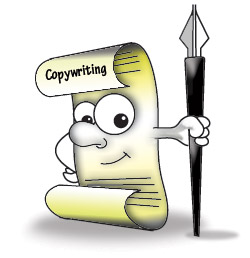 The practice of persuasive copywriting is a necessity, if you want to sell products, services, or ideas online.
The practice of persuasive copywriting is a necessity, if you want to sell products, services, or ideas online.
While great writing is truly an art, those looking to improve their craft as a copywriter can find a lot of help from behavioral psychology and neuroscience studies.
The only problem is, good writers are often busy people, and they don’t have time to slog through dry research papers to find an interesting nugget or two.
Fortunately, I’ve done the heavy lifting for you, and today you’ll get to look at 7 fascinating studies on the mind … and see how you can apply their findings to produce more persuasive copy.
Sound good?
Let’s jump in!
1. Make em’ feel something
Imagine with me if you will …
You’re watching football, and your team’s quarterback gets slammed with a bone-crunching tackle, and snaps a rib.
Ooh …
Can’t you just feel yourself cringing at the thought?
That’s the power of mirror neurons and how they affect the human mind.
According to research on the subject, these neurons activate when you “observe” something happening, and then transfer some of the feeling (if it’s powerful enough) on to you.
It’s likely that they’re biologically useful for necessary evolutionary traits, such as empathy or “walking in someone else’s shoes.”
Although a majority of the current research on mirror neurons focuses on literal observation, great writers know that strong emotions can be conveyed through words as well.
Think about my first example … if you did cringe at the thought of a man breaking his ribs, you’re already experiencing this effect in action!
When crafting compelling copy, you have to understand what keeps your potential reader up at night.
It’s easy for me to write out, “Envision this …,” but it’s not as easy to get people to care.
You have to speak to a feeling that’s already there, not try to force one on your reader.
If you’re selling software that takes the hassle out of content optimization, you need to speak to the frustrated entreproducer who’s tired of nitpicking and game-playing for Google, and who wants to get back to writing.
If you’re selling beer (now we’re talkin’), you need to invoke memories of good times spent with friends over an ice-cold beer.
Using this information on mirror neurons to transfer a desired feeling onto readers is effective, but it’s only going to work if you know what makes them tick.
2. Be wary of “selling” savings
Here’s something you should know … if you’re using precious real estate to chest thump about your low prices, you’re doing it wrong.
Not only has research shown us that asking customers to directly compare prices is a bad idea, but new research from Stanford University has revealed that that selling “time” is far more effective (for most businesses) than selling money.
Jennifer Aaker, the lead researcher, sought to explain why companies like Miller would use a slogan such as …
It’s Miller Time!
As an inexpensive beer, shouldn’t they be promoting their reasonable prices instead? (I like that we’re back to talking about beer.)
It turns out, no …
A person’s experience with a product tends to foster feelings of personal connection with it, referring to time typically leads to more favorable attitudes — and to more purchases.
What does this have to do with writing great copy?
Simple … it helps you speak to what really matters to your buyer, and that’s their time, troubles, and objectives.
We know that customers are willing to pay more for exceptional service, but you also need to understand that they’re willing to pay your prices if you speak to them in a way that shows you value what they hope to achieve, which is far more genuine (and effective) than trying to sell them on bottom-dollar prices.
Or, as Professor Mogliner would put it:
Ultimately, time is a more scarce resource — once it’s gone, it’s gone — and therefore it’s more meaningful to us.
3. Sweat the small stuff
This is an incredibly important study for copywriters and conversion experts.
A fascinating piece of research from Carnegie Mellon University was able to show that the devil really is in the details, especially when it comes to creating copy that converts.
In the study, researchers tested how changing a single phrase would affect conversions over the long haul.
They did this by setting up a free DVD trial program (remember DVDs?) that customers could sign up for, and testing it between two different phrases …
- “a $5 fee” to
- “a small $5 fee”
… wait a minute, seriously? Yup, and here’s the best part:
They found that the second phrase was able to increase sign-up rates by over 20%.
The science behind it is actually pretty interesting: they found that this emphasis on the “small” fee made it far easier to deal with for conservative spenders, also known as “tightwad” customers.
When it comes to great copywriting, however, the lesson is more in the art of great writing rather than in the “science.”
You must take the time to measure, improve, and track the success of your craft. Great writers today have no excuses for not testing their work, so make sure you’re sweating the small stuff, and keeping tabs on how it performs.
4. Embrace your devilish side
A big mistake that many copywriters make is taking little effort to be authentic.
Everything is high-level: they promise the world, and since many consumers are hesitant to believe claims like that, they’re more likely to glaze over your copy, rather than get swept up by it.
The answer?
Create strong copy that addresses their objections head-on.
You might be familiar with the term “devil’s advocate,” which is when someone takes a position that they don’t inherently agree with in order to prove a point.
What you might not know is that the Catholic church used to use a person called the “devil’s advocate” when they canonized someone into sainthood. Their job was to find flaws with the person so that the debate around them was impartial.
They ended the practice … and with good cause, because you’ll soon see that playing the devil’s advocate actually enhances the persuasiveness of the original argument!
A study by social psychologist Charlan Nemeth was able to show that arguments framed in the “devil’s advocate” style were more likely to persuade listeners to support the original argument, rather than to disagree with it.
Nemeth (and a few other researchers) have concluded that this occurs because potential flaws and concerns are brought up (and subsequently addressed) when engaging in the devil’s advocate style, either by the speaker, or — subliminally — by the listener.
When you’re listening to a persuasive argument and you think to yourself:
But will that address ____?
… you’re much more likely to be persuaded if the speaker says something like:
Many of you are probably worried about ____ right now.
… because your concerns are put in the spotlight instead of never being brought up.
Copywriters, are you listening?
Instead of trying to paint a picture of an infallible offer, point out common concerns that customers may have, and then assure them with facts and evidence that they have nothing to worry about.
5. Don’t rely on adjectives alone
Some writers might not agree with this, but college kids will tell you: an admissions letter is one of the most stressful pieces of persuasive copy you can write.
And believe me, it is very much a piece of selling copy — you’re selling you to some person who decides the fate of your future.
Interestingly enough, in this analysis of persuasive admission letters — as discussed by the Harvard MBA admissions director who read them — verbs beat out adjectives more often than not.
Verbs get specific and are harder to ignore, especially in a vain world where everybody describes themselves with the same trite adjectives.
How about this example …
I know this guy Brian who is intelligent, hard-working, and really insightful.
Big whoop.
Now what if I told you that he founded a successful company, he created a popular blog, and he leads a talented team.
Much more impressive, right?
In fact, the only thing you should hold against him is that he used to be an attorney. 😉
Verbs get in your face, and since your competitors will be fluffing up their copy with adjectives they found in a thesaurus, you can win people over by describing what you actually do.
6. Include “power” words
Smart copywriters know that there are certain persuasive words that hold more sway than others.
Top 5 power words:
- “You” (in actuality, someone’s name, such as when sending an email newsletter)
- Free
- Because
- Instantly
- New
Here’s the breakdown …
“You” – According to recent research examining brain activation, few things light us up quite like seeing our own names in print or on the screen. Our names are intrinsically tied to our self-perception, and we become more engaged, and even more trusting of a message when our name appears in it.
Free – Dan Ariely, in his book Predictably Irrational, revealed a study with chocolate truffles and Hershey’s Kisses that was quite startling: when the Kisses were advertised as free, people chose them over the truffles by 38% … despite the fact that most people had chosen the truffles when the Kisses were just a penny!
Because – A classic study from Robert Cialdini, the research found that people were more willing to heed to a request (in this case, to cut in line) when people used the word “because”… even if the request was nonsensical (ie, “Can I use the copy machine first because I need to make a copy?”).
Instantly – We all want things yesterday. According to certain MRI studies, few words light up our mid-brain quite like those that invoke a sense of fast reward. Let people know you’ll solve their problems quickly, and they’ll be more prone to buy.
New – Novelty plays an incredibly important role in activating our brain’s reward center and in keeping us happy with our purchases. The research shows that perceived “newness” is important for a product, but can actually be damaging for a brand (people trust brands that have been around for a long time).
7. Use transportation for persuasion
Why do good stories consume us so completely?
No other form of writing can keep you up into the wee hours of the night (willingly!) quite like stories.
According to research from social psychologists Melanie Green and Timothy Brock, there’s a very simple reason why stories are so persuasive:
Transportation leads to persuasion.
People can block out sales pitches … but everybody loves listening to stories.
Their research shows that stories have a tendency to get in “under the radar,” and transport us to another place, and in this place we may embrace things we’d likely scoff at in the harsh “real world.”
This is great news for those adept at telling an enchanting tale, but how can the rest of us write more persuasive stories?
According to additional research by the duo, the following tactics work well:
- Detailed imagery: Imagery paints the picture for story. It’s hard to understand how scary Mordor is without Tolkien giving you detailed descriptions of the barren landscapes, the looming presence of Mt. Doom, and the horrifying screams of the Nazgul.
- Suspense: How do you get people to finish a story? Leave them begging to know the end in the very beginning. It’s hard for us to not finish things that catch our attention, so lead with something exciting first, not later.
- Metaphors and irony: The reason that stories like Animal Farm are so popular is because they tell a hidden tale through metaphor (such as depicting the rise of Stalin). Many good stories include these elements so that readers will have “Aha!” moments, allowing them to truly grasp the author’s message.
- Modelling: If you’re looking to have someone change a behavior (or take a desired action), you can “model” the action via a story. When we listen to transformation tales, we re-imagine ourselves as the main character, and according to the research, it makes the action easier to understand.
ARTICLE SOURCE: This content is syndicated news that can be used for your research, and we hope that it can help your productivity. This content is for educational purposes and is not made for any kind of commercial purposes of this blog.




